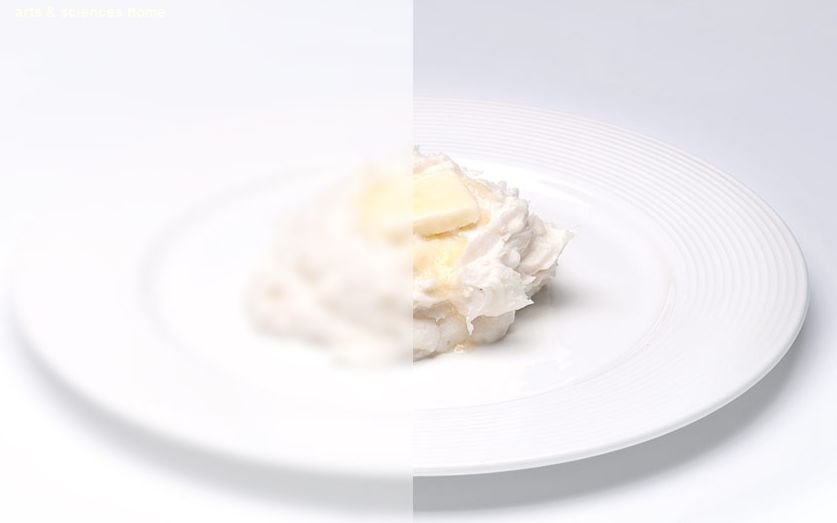Boston University Biopsychologist Alice Cronin-Golomb and her research partners designed the “Red Plate Study.” Their idea was to see whether seniors with advanced Alzheimer’s would eat more food from red plates than they did from white ones. The researchers in the Vision & Cognition Lab of the Center for Clinical Biopsychology, which Cronin-Golomb directs, had reason to hope that their experiment would succeed.
40% Lose Weight
Nursing home staff often complain that Alzheimer’s patients do not finish the food on their plates even when staff encourages them to do so. Forty percent of individuals with severe Alzheimer’s lose an unhealthy amount of weight.
Previous explanations for this phenomenon included depression, inability to concentrate on more than one food at a time, and inability to eat unassisted. Cronin-Golomb and her colleagues took a different approach, however. They believed this behavior might be explained by the visual-cognitive deficiencies caused by Alzheimer’s. Patients with the disease cannot process visual data—like contrast and depth perception—as well as most other seniors.
White vs. Bright Red Plates
So the research team tested advanced Alzheimer’s patients’ level of food intake with standard white plates and with bright-red ones. What they found was astonishing – patients eating from red plates consumed 25 percent more food than those eating from white plates.
Since these findings were published, some nursing homes have made red plates the norm. Private companies even market special red plates for seniors with visual impairment.
Red Plates as a Visual Aid for Alzheimer’s
The CAS researchers’ approach to the problem of decreased functioning was what led to their breakthrough. Whereas many scientists look for drugs to treat degenerative cognitive diseases like Alzheimer’s and Parkinson’s, Cronin-Golomb and her team focus instead on finding visual aids that can improve patients’ quality of life.
By assisting Alzheimer’s and Parkinson’s patients with their visual perception, the researchers actually are able to improve the subjects’ mental functioning.
Enhancing What People with Alzheimer’s See
Asks Cronin-Golomb, “If the information getting into their brain through their eyes is already degraded, how can you expect them to do much with that?”
“If we can enhance how fast they are getting information in, then they can have a better shot at remembering it. For instance, we can improve their reading speed just by enhancing what they see.”
Alzheimer’s Challenges Memory AND Vision
It is generally known that memory problems are associated with Alzheimer’s disease, but many people don’t realize that vision problems can plague these patients as much as their mental challenges do.
Cronin-Golomb and her team put subjects through a battery of tests to determine their visual capabilities—visual psychophysics tests to look at contrast sensitivity, color discrimination, and depth perception; neuropsychological tests to examine object recognition, word reading, facial recognition, and pattern completion; and, finally, tests to determine whether the subjects perform better using visual aids, such as measuring cups with larger lettering. Once researchers understand each subject’s abilities, they can then assess how various visual aids improve a patient’s visual perception.
One experiment the team conducted was to test which shades of gray pills were easiest for subjects to pick out. Seniors commonly take multiple daily medications, but pill manufacturers often don’t take into account patients’ vision problems when choosing pill colors. The researchers found that with the right shade of gray, they could help patients more easily locate their medications.
Caregivers Use Visual Aids
The researchers also educate local caregivers for the elderly about how to use visual aids to improve patients’ functioning. Many of these caregivers are family members taking care of loved ones. Others are professional caregivers at day programs for Alzheimer’s and Parkinson’s patients, as well as architects designing living spaces for older adults.
Team member and PhD candidate Tom Laudate recalls an encounter following his talk to a local caregiver support group.
Amazon helps make dementia-friendly homes:
- BATHROOM: High-contrast color helps dementia see better and avoid accidents.
- KITCHEN: Red Dishes. (Alzheimer’s patients eating from red plates consumed 25% more than white.)
- HOME: Phones for Seniors and People with Dementia
- BEDROOM: Sensors, Pagers and Alarms for Dementia
- LIVING ROOM: 7 Best Clocks for Dementia
White Mug, White Milk, White Countertop
“A woman came up to me and said that just the week before, her mother had been in the kitchen trying to pour milk into a mug. The mug was white, the milk was white, and the countertop was white. She poured milk all over the place, and it wasn’t until the daughter heard me talk that it clicked in her mind and she understood her mother’s vision problem. It’s a great feeling to be able to give some information to someone that can make a difference. It’s not huge; we are not solving Alzheimer’s, but we are helping people in their daily lives.”
Cronin-Golomb’s goal is not only to train others; she is also driven by a personal connection to, and respect for, the elderly. While some people stigmatize Alzheimer’s and Parkinson’s diseases and approach them with a sense of dread, she recognizes that the elderly, including some of her test subjects, are full of vitality.
“I love working with Parkinson’s patients,” she says. “It is probably from my background. My grandma lived upstairs from me. She had all these brothers, sisters, and cousins, and they’d play these really competitive games of pinochle. So they weren’t doting old people. This gave me the idea of old people as very vivacious, and only later did I come across the attitude that old people are slow and frail.”
More Information
SOURCE:
- Jeremy Schwab
Boston University Arts & Sciences
REFERENCE:
- PubMed, National Library of Medicine:
Visual contrast enhances food and liquid intake in advanced Alzheimer’s disease












Got fed up having to constantly clean the floor/carpet due to missing the coffee table with mugs/cups of tea & coffee. Stood up and looked down and realised dark timber floor, dark red carpet and timber table could not see where one began and other finished. Put white cloth on table and no more accidents. As carers we need to look at things from different perspectives
great
Amazing how many RED products suddenly get advertised! Surely it's a matter of contrast – not about red and white.
When I give my husband white rice and white fish on a white plate I find he doesn’t quite finish his meal. A few months ago I gave my son a set of 8 red dinner plates. Guess it’s time to ask for some back!
Or just get new ones? Its rude to ask for a gift back Barbara.
What of those with vision imparement like glacoma or macular degenieratin?
What about those who solely depend on someone who feeds them. Can the red plate work for them too
I guess at the end of the day it is colour contrast that is important, ensuring plates are a different colour to the tablecloth or mats and that the dining experience is an enjoyable one. We also need to take into consideration that everyone living with dementia is a unique person with different perspectives. As Kate Swaffer says when you have met one person with dementia you have met one person with dementia! Sometimes I think we forget individuality and what works for one person doesn't necessarily work for someone else. I believe colour contract is the Key.
So true. Everyone is an individual
I completely agree with the article in regards to we need to be mindful of depth perception and contrast, etc. However, I suggest to care-partners to work with their client and/or loved one to explore colors. So trying a few of the primary colors and putting two of the colors in front of them and which one are they drawn to. Then taking the color they are drawn to and offering another choice until your loved one has consistently picked the same color. This is helpful in selecting which color is best for their contrast I have found.
Tried the red plate. Unfortunately, it did nothing to change my wife's eating habits.
Many dementia patients avoid anything yellow.
Our practical trial show a 70% increase with yellow plates here in the UK
I think Norms it depends on the dinner thats not good with a fish dinner
here at the Global Purple Angel dementuia awareness campaign we recommend yellow plates and utensils as red is often regarded a a DANGER colour
Hope this helps